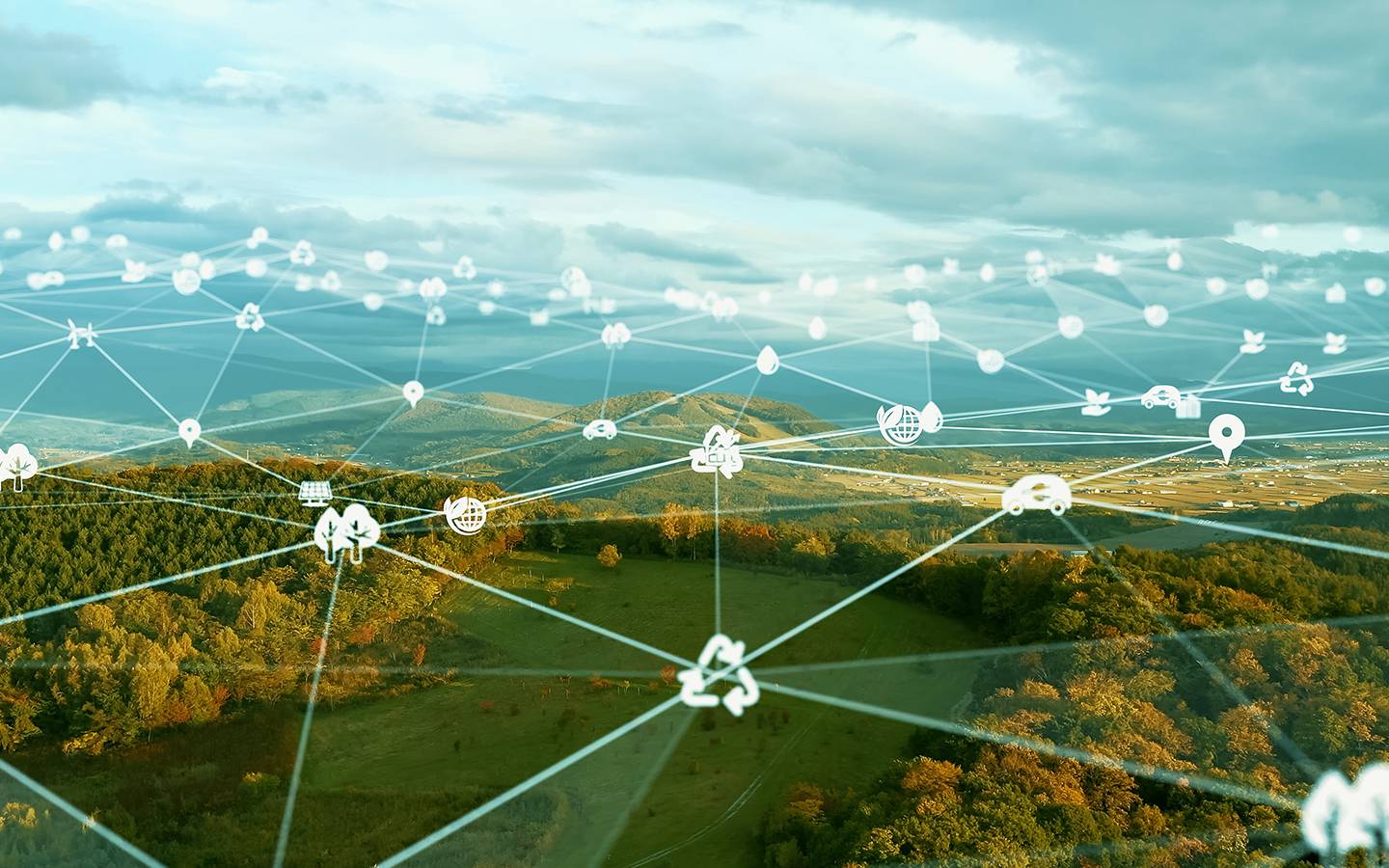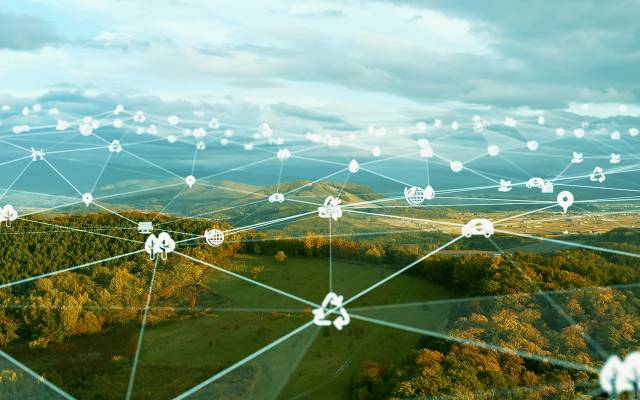Environmental, social, and governance (ESG) frameworks have become a focus in the private and public sectors. At the same time, Internet of Things (IoT) devices are seeing greater demand for their ability to carefully monitor, understand, and manage environmental conditions, and promote a shift to more sustainable practices.
IoT networks for businesses and governments are expected to increase exponentially soon due to possible use cases in air, water, energy, trash, and other environmental concerns. To support these networks, organizations will need to update their data lifecycle management strategies while investing in larger, more reliable data storage infrastructure.
Role of IoT in Environmental Monitoring
Environmental changes happen gradually over time, which can lead to them being overlooked until they’ve turned into problems that require urgent attention.
From excessive pollution levels to inefficient energy consumption, environmental issues can lead to increased costs, compliance concerns, and other inefficiencies. By deploying IoT devices to monitor these conditions, organizations can continuously gather and monitor environmental conditions to detect abnormalities and other concerns faster than ever before.
Through a combination of automated monitoring and expert-led evaluation, data from environmental IoT monitors can support better, more responsive decision-making that helps organizations meet and beat their sustainability goals.
Types of Environmental Monitoring Devices
Depending on the types of environmental data you’re collecting and how frequently, your organization may require many different IoT monitoring devices. These types of these devices can be placed broadly into one of two categories: acute data collection or continuous monitoring.
Devices used for acute monitoring may include meters, field kits, and samplers designed to periodically check environmental conditions. Instead of collecting data constantly, these are designed for occasional data collection. A field kit, for example, may be used to monitor the contents of waste materials on a set schedule. A meter may be referenced monthly or more frequently to track energy consumption.
In other cases, continuous data collection will be required to monitor environmental changes in real time. Sondes (also referred to as moles or beacons), sensors, and other IoT data loggers can constantly collect information so it can be stored and used for reference. Automated monitoring, along with expert evaluators, may be used for real-time surveillance of environmental conditions.
Continuous monitoring may be required in cases where sudden changes require an immediate response, as in the case of toxic gas detection or poor air quality.
Environmental Monitoring and Sustainable Practices
When combined with sustainable infrastructure and operations, environmental monitoring can help businesses adopt sustainable practices that meet regulatory requirements and create new value.
Air Quality
Air quality sensors can increase an organization’s understanding of how its operations contribute to local air pollution. This monitoring can keep the business in compliance with local regulations and identify opportunities to improve its sustainability efforts.
Data from IoT air quality sources can help detect failing equipment, alert workers and other affected individuals to take protective action, and identify opportunities to invest in more efficient equipment and processes that reduce the environmental impact on air quality.
Water Quality
Sondes, data buoys, and other IoT sensors can monitor water quality in a business facility and external environments at risk of pollution from runoff.
Real-time monitoring can collect data on this water quality for required compliance reporting and to support more responsive management of facilities. Automated monitoring can expedite intervention to reducethe extent of pollution, helping companies save facility costs and avoid regulatory penalties.
Energy Consumption
IoT sensors can monitor equipment and facilities for high energy consumption, including activity that runs the risk of overheating equipment or creating other hazards.
Data collected from these sensors can be used to guide more efficient energy usage, as well as investments into lower cost, renewable energy sources.
Waste Management
Waste bins equipped with IoT sensors enable more efficient waste collection based on need rather than rigid schedules. Smart dumpsters and waste bins can also monitor bin location and temperature to address theft and identify potential safety issues.
IoT monitoring for waste management can address one of the most pervasive urban challenges: optimizing waste collection routes to lower costs while maintaining sanitary conditions citywide.
Toxic Gas Detection
Toxic gas can pose a potentially life-threatening risk to everyone close to it. Natural gas and other flammable, toxic gasses can be detected by IoT sensors that can automatically issue an alert and subsequently trigger actions, including vacating a facility, contacting emergency response services, and/or shutting off the source of those leaks, if possible.
Impact of IoT on ESG Goals
In a time when many customers and citizens prioritize sustainability, IoT environmental monitoring can have a wide range of positive business effects, including reduced operational costs, support for compliance, and enhanced company reputation. These benefits depend on how the technology is implemented and how the data is used.
The following are some ways environmental monitoring helps your firm achieve its ESG goals:
Optimizing Energy Usage
When deployed across your entire infrastructure, IoT sensors can collect energy data and make it available to an analytics solution capable of identifying consumption trends and inefficiencies. Energy usage can be evaluated across your business and down to individual appliances, offering comprehensive insights to guide your energy management strategies.
These policies may include moving certain energy workloads to off-peak hours, investing in more energy-efficient equipment and processes, and developing campaigns to enlist the help of employees to curb non-essential energy usage.
Streamline Data Collection
Many IoT sensors used for environmental monitoring can reduce or eliminate manual labor required to collect this information. Internet-connected devices can transmit data in real time to a data management solution where it can be processed, evaluated, and stored.
Streamlined data collection improves the organization’s responsiveness to a wide range of sustainability concerns, including pollution and energy consumption. Meanwhile, automated data transmission reduces the human labor and cost required to collect data, freeing up resources that can be employed elsewhere.
Enhance Product Sustainability
More efficient manufacturing processes reduce the energy, material, and related costs to create these products. This sustainability can be a selling point, allowing the business to share the product manufacturing process with consumers eager to reduce the environmental impact of their spending.
B2B clients may also prioritize product sustainability when making purchases and committing to vendor relationships, especially if their ESG initiatives emphasize the need to build relationships with partners that practice sustainability.
Best Practices for Sustainable Data Storage
IoT monitoring requires more than an investment in IoT sensors and other devices. Your organization also needs the right infrastructure to store and manage this information—especially when it comes to analyzing and retrieving this data.
Here are some recommended best practices:
Data Collection and Storage
Environmental monitoring involves gathering vast amounts of data from various locations, and holding onto that information for weeks, months, and even years.
Seagate enterprise data backup solutions can provide whatever capacity and reliability your organization needs to store this data securely, ensuring it is readily accessible for analysis and decision-making.
Lifecycle Management Strategy
Collecting data is only the start of creating value from this information. You also need clear protocols in place to process, store, and manage this data across its lifecycle.
This also includes procedures for destroying data when it no longer offers value. Create a lifecycle management strategy that outlines all processes and policies governing your IoT data from creation to destruction, and make sure this strategy is in compliance with all applicable regulations.
Efficient Data Storage Solutions
Reduced power consumption and storage space requirements result in lower energy consumption and fewer physical resources used in data storage infrastructure, both of which support sustainable business practices.
Seagate data backup and recovery systems are optimized for energy efficiency and storage density, so organizations can minimize their environmental footprint.
Data Disposal and Recycling Practices
Seagate’s sustainability practices encompass the entire lifecycle of products and systems—from design and manufacturing to end-of-life disposal or recycling. Our commitment to sustainability includes initiatives such as reducing material waste, increasing product durability, and facilitating responsible disposal and recycling of electronic waste.
Seagate ESG Efforts
Here’s how Seagate is leading the charge to embrace sustainability and ESG, while helping our customers do the same:
Holistic Product Sustainability Approach
The mining and collection of certain restricted substances can have a detrimental effect on human health and the environment—especially when the devices using those substances are retired.
Seagate’s product sustainability approach is committed to meeting or beating all applicable global regulations regarding the procurement and use of these restricted substances.
Driving a Sustainable Datasphere
Through product sustainability and energy-efficient enterprise storage solutions, we’re helping businesses create sustainable dataspheres that minimize energy consumption and reduce resource waste.
Renewable Energy Transition
Seagate aims to fully power its manufacturing and R&D sites with renewable energy by 2030. We also plan to achieve carbon neutrality by 2040.
Achieve Sustainability in the Digital Age with Seagate
From on-premises to cloud to hybrid storage, Seagate can help your business create a data storage solution that’s optimized for sustainability.
Our Exos® X, Exos E, and Nytro® SATA SSD drives are designed to meet our ambitious product sustainability goals while optimizing energy consumption. We can also configure custom systems using Exos CORVAULT™, JBODs, expansion enclosures, and hybrid storage arrays to meet your unique data center scalability, reliability, and sustainability needs.
Meanwhile, our Lyve™ Cloud and Lyve Mobile solutions can be deployed to optimize edge computing and data transfers for better speed, responsiveness, and resource efficiency across your IoT network.
Talk to an expert today to learn more about your IoT data storage options with Seagate.












